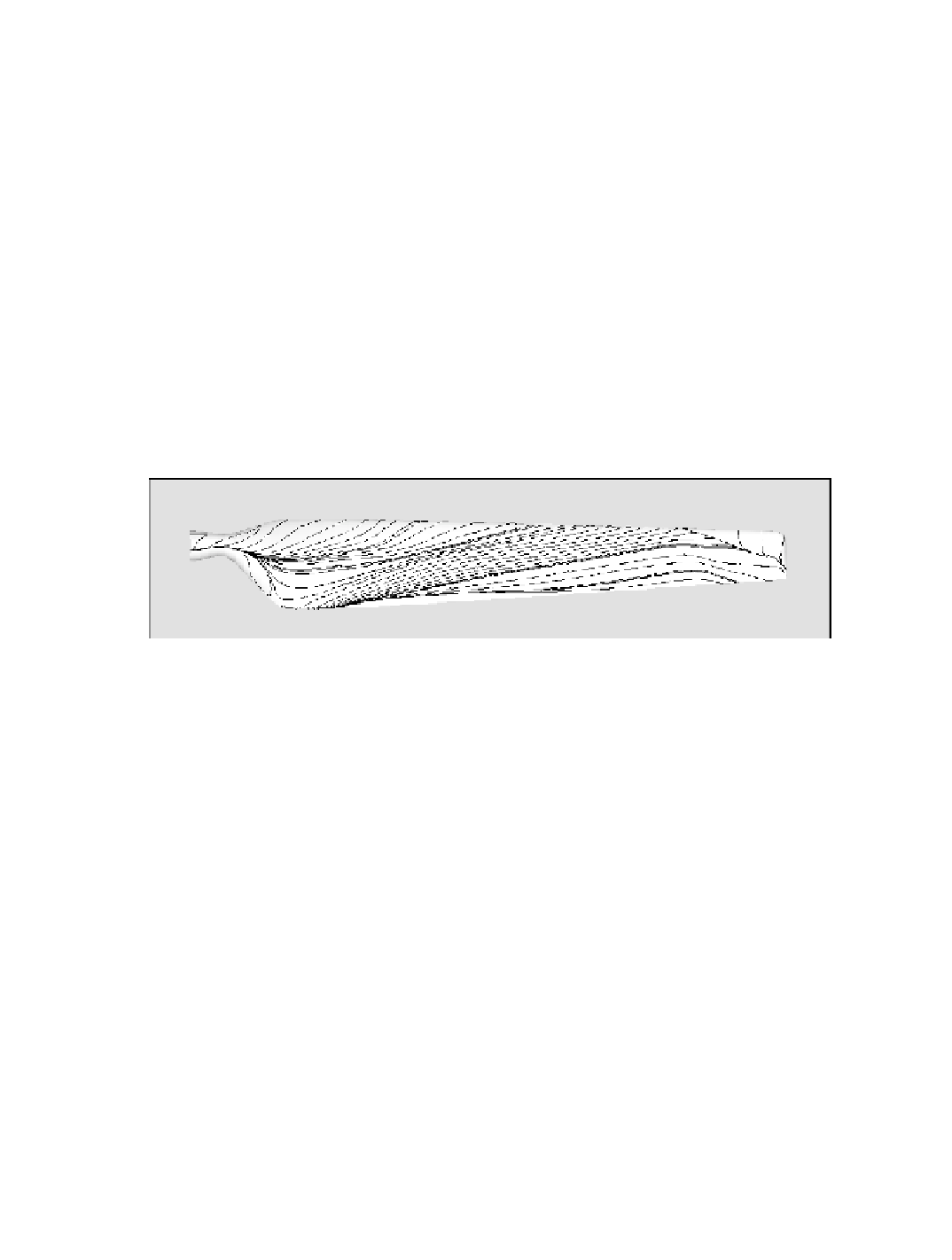Environmental Engineering Reference
In-Depth Information
impingement, the shear layer surrounds a region of intense recirculation strongly reminiscent
of a vortical structure.
Other analyses of time variations in measured surface pressure data have enabled detec-
tion and tracking of separation and impingement locations, enabling more rigorous validation
of computational results and direct inferences regarding flow field topology [Schreck and
Robinson 2003, Schreck
et al.
2007]. Together, these data and analyses make it clear that
rotational augmentation is mediated by prominent concentrations of vorticity (if not vortices)
present on the blade suction surface.
In addition to the predominantly two-dimensional components shown in Figure 5-50,
strongly three-dimensional influences are also present, as illustrated in Figure 5-51. The
computed
separation line
now extends along the blade's leading edge from 0.20
R
to 0.85
R
.
From 0.85
R
, the separation line travels outboard and aft, demarcating a small triangular
region containing chordwise streamlines and two-dimensional flow. Impingement is now
prominent on the blade surface, signified by an aggregation of limiting streamlines that cross
the blade from midchord at 0.30
R
to the leading edge at 0.65
R
. Within the triangular region
between separation and impingement, the streamlines proceed outboard and forward toward
the leading edge, suggesting the presence of a recirculating vortical region over this blade
surface area.
Figure 5-51. Planform view of the computed UAE Phase VI blade flow field, showing
suction surface limiting streamlines in the stall regime.
U
¥
= 15 m/s. [Computation
courtesy of N. Sørensen, Risø DTU and Aalborg University]
Rotational Augmentation Modeling
Rotational augmentation models must account for both centrifugal and Coriolis influ-
ences on blade aerodynamics. The combination of these effects frequently produces regions
of chordwise and radial flow that coexist on the turbine blade. Different rotational augmenta-
tion models can be classified as predominantly empirical, theoretical, or computational.
One rotational augmentation model typical of some empirical approaches is that of Cor-
rigan and Schillings [1994]. Originally intended for use with rotorcraft, this model exploited
theoretical research by Banks and Gadd [1963] as an initial guide. This previous work sug-
gested that the principal effects of rotational augmentation could be accounted for using a
single parameter relationship. Ultimately, Corrigan and Schillings arrived at a simple func-
tional relationship, basing their model on correlations with extensive rotorcraft test data.
These data inherently included centrifugal and Coriolis effects. This model was later adapted
for wind turbine power predictions and validated by Tangler and Selig [1997].
A theoretical approach was pursued by Snel [1991], one in which model development
began by applying an order of magnitude analysis to the Navier-Stokes equations for the blade
flow field. This procedure yielded a reduced equation set that retained centrifugal and Coriolis

Search WWH ::

Custom Search